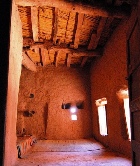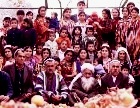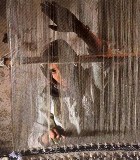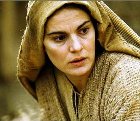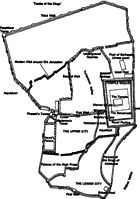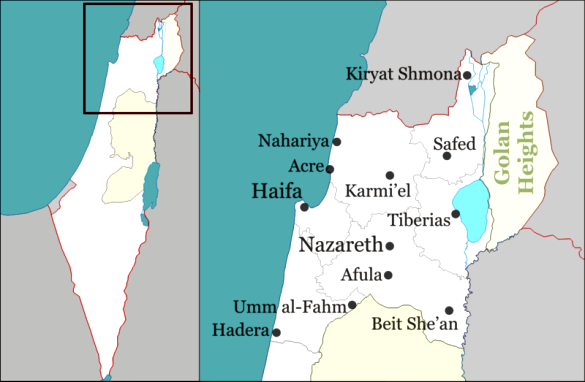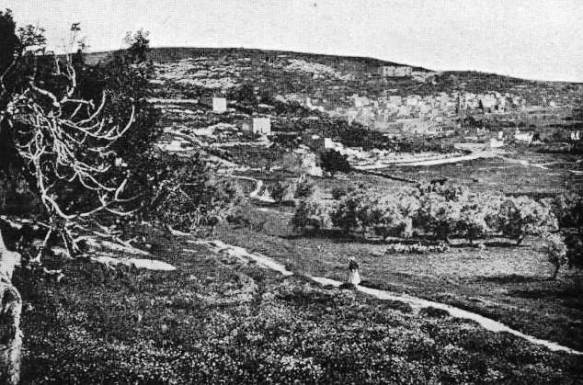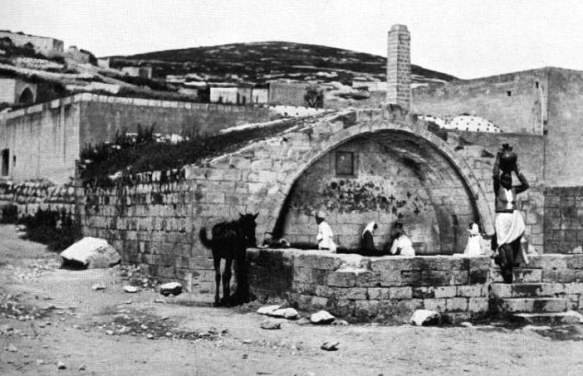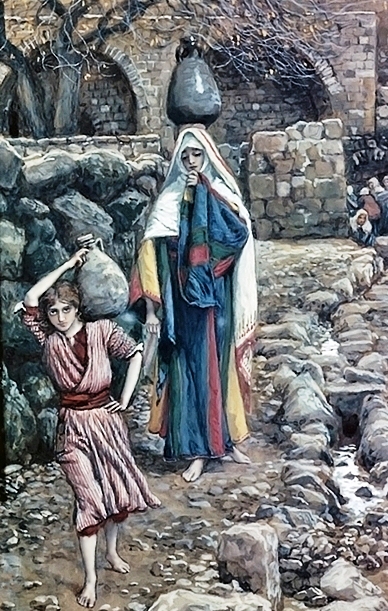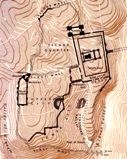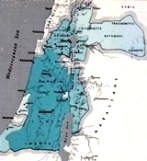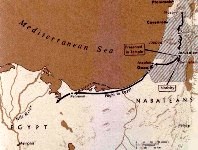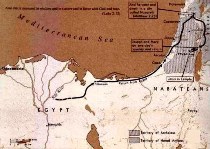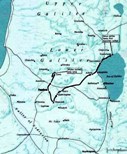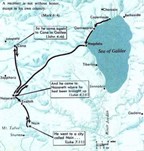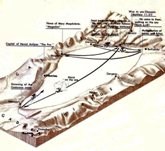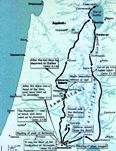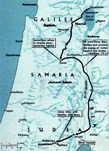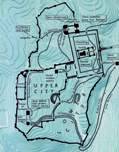Women in Nazareth
Nazareth Women in Bible times
Questions/activities for Bible study groups
- Look at the ‘to do’ list for women in ancient Israel. Check off all the items a modern woman would do.
- Read the extract from the Book of Proverbs (below). If you are a wife and mother, check the items off against your own life.
- Interview your own mother, or an older female relative (questions further down this page). Try to discover details of her life, to understand her better.
- Read the heart-breaking ‘Prayer for a New Mother’ by Dorothy Parker (below), and spend some quiet time thinking about it.
An ancient ‘to-do’ list for women
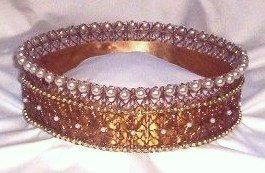
The modern view of women in the ancient Near East is that they were down-trodden, subservient to their husbands and burdened by many children. This could not be further from the truth. The home was important in Jewish religion. In our society, people associate prayer with a church. In the Jewish religion, both the home and the synagogue were places of prayer. A rabbi or scholar was in charge of prayer in the synagogue, but in the home, each individual woman in charge of a household was responsible for the prayer-services held in that home.
Women regarded the house as their kingdom. They ruled it. Men came and went from the house, but it was essentially the domain of the women. It is true that they worked hard – but then so did the men. Moreover, judging by the list of tasks performed by the ‘Woman of Worth’ described in Proverbs 31:10-31, they had aspirations we would regard as ‘non-traditional’.
This is what they aimed for in their lives – their ‘to-do’ list: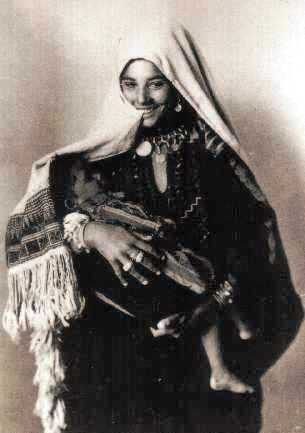
- find a well-educated and well-to-do man as a husband – someone who could give them a comfortable life, and their children a good start in life
- spin and weave cloth, to make the family’s clothing and (in earlier times) the tents they lived in
- make and sell finished items of clothing; this meant skill in weaving and embroidery
- design and make suitable clothing for all members of the household
- dress well and attractively, so that she was confident and her family was proud of her
- keeping physically and mentally strong and fit; no lolling on silken cushions for the Woman of Worth
- give religious instruction to the children: a mother was their first teacher, and the great influence on her children’s lives
- gather food and assemble a varied and healthy diet for the members of the household; the Jewish dietary laws supported this
- administer the finances of the family and oversee the family business, with all the necessary skills this involved
- buy investment property wisely
- supervise investments and make a profit from them, then re-invest the profits
- perform charitable work and care for the poor; this was seen as one of the main duties of a Jewish woman
- oversee the emotional and physical well-being of members of the household; she was the ‘go-to’ person in the household
- be available at all times to anyone who needed her.
 The list hardly mentions children – but not because children were unimportant. They were the center of a woman’s life, her crowning achievement and a great blessing given by God. Not having children was counted as a very great misfortune. The household that a woman governed was centered on the maintenance of a healthy and happy extended family.
The list hardly mentions children – but not because children were unimportant. They were the center of a woman’s life, her crowning achievement and a great blessing given by God. Not having children was counted as a very great misfortune. The household that a woman governed was centered on the maintenance of a healthy and happy extended family.
The status of mothers and motherhood has been so down-graded in the modern world that it is hard to appreciate the honor given to biblical women who gave birth to children and raised a family. But such was the case in the ancient world, at least in the part of the world where Mary and Joseph lived in Nazareth.
Women’s greatest achievement was to give birth, preferably to a boy. Their second achievement was to raise a child
- who believed and trusted in God
- who respected tradition, and
- who lived a good life.
Bible Study Resources
Read the following extract from the Book of Proverbs. If you are a wife and mother, check the items off against your own life. You’ll probably find you measure up quite well!
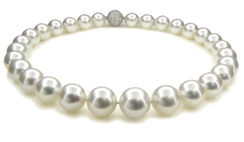 10 When one finds a worthy wife, her value is far beyond pearls.
10 When one finds a worthy wife, her value is far beyond pearls.
11 Her husband, entrusting his heart to her, has an unfailing prize.
12 She brings him good, and not evil, all the days of her life.
13 She obtains wool and flax and makes cloth with skillful hands.
14 Like merchant ships, she secures her provisions from afar.
15 She rises while it is still night, and distributes food to her household.
16 She chooses a field to buy; out of her earnings she plants a vineyard.
17 She is girt about with strength, and sturdy are her arms.
18 She enjoys the success of her dealings; at night her lamp is undimmed.
19 She puts her hands to the distaff, and her fingers ply the spindle.
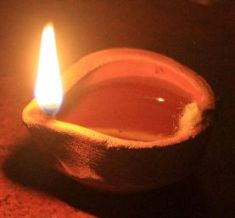 20 She reaches her hands to the poor, and extends her arms to the needy. Oil lamp
20 She reaches her hands to the poor, and extends her arms to the needy. Oil lamp
21 She fears not the snow for her family; all her charges are doubly clothed.
22 She makes her own coverlets; fine linen and purple are her clothing.
23 Her husband is prominent; he sits with the elders of the land.
24 She makes and sells garments, and stocks the merchants with belts.
25 She is clothed with strength and dignity, and laughs at the days to come.
26 She opens her mouth in wisdom, and on her tongue is kindly counsel.
27 She watches the conduct of her family, and eats not her food in idleness.
28 Her children rise up and praise her; her husband, too, extols her:
29 “Many are the women of proven worth, but you have excelled them all.”
30 Charm is deceptive and beauty fleeting; she who fears the Lord is praised.
31 Give her a reward of her labors, and praise her at the city gates.
Book of Proverbs 30:10-31
Bible Study Activities
A Woman’s Life
 Interview your own mother, or an older female relative. Try to discover details of her life, to understand her better. Ask some of the following questions, or compose your own:
Interview your own mother, or an older female relative. Try to discover details of her life, to understand her better. Ask some of the following questions, or compose your own:
- What are the three major events in your life that you remember best?
- Can you describe one of these events?.
- What have you done that you are most proud of?
- What did you find most difficult in your life?.
- Did you learn about Mary and Joseph of Nazareth when you were at school?
- If so, how were they portrayed?
- What part did Mary or Joseph play in religious rituals you were involved in?
- Did you try to imitate any of their qualities in your own life?
You could, if you wish, answer some of these questions yourself, and jot down your ideas and memories.
Mary’s life in Nazareth
Read the heart-breaking ‘Prayer for a New Mother’ by Dorothy Parker, and spend some quiet time thinking about it.
Prayer for a New Mother
The things she knew, let her forget again —
The voices in the sky, the fear, the cold,
The gaping shepherds, and the queer old men
Piling their clumsy gifts of foreign gold.
Let her have laughter with her little one;
Teach her the endless, tuneless songs to sing,
Grant her her right to whisper to her son
The foolish names one dare not call a king.
Keep from her dreams the rumble of a crowd,
The smell of rough-cut wood, the trail of red,
The thick and chilly whiteness of the shroud
That wraps the strange new body of the dead.
Ah, let her go, kind Lord, where mothers go
And boast his pretty words and ways, and plan
The proud and happy years that they shall know
Together, when her son is grown a man.
Daily Life in Nazareth
Try to imagine the daily life of Mary or Joseph, living in the little village of Nazareth.
- What are the smells? The colors? The sounds? The smells?
- What is the landscape? What time of day is it?
- What is the mood of the people whose eyes meet yours?
- Are the people old or young? Dark or fair? Good-looking or ugly? Tired or energetic?
- What are they wearing (clothing, footwear, jewelry)?
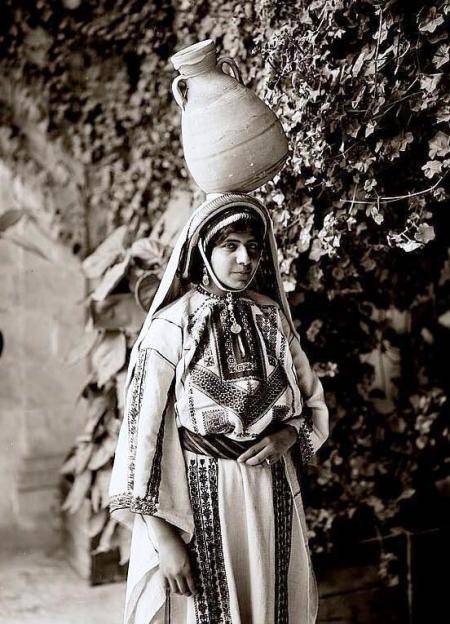
Peasant women like Mary often had elaborately embroidered clothing for special occasions



